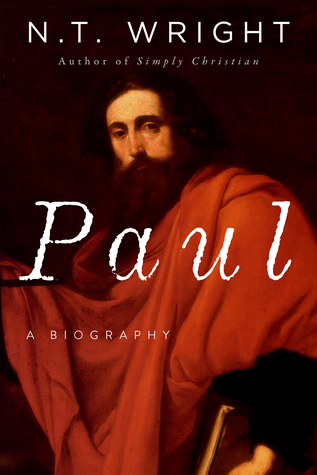More on this book
Community
Kindle Notes & Highlights
Paul might dispute the suggestion that he himself changed the world; Jesus, he would have said, had already done that.
One can imagine a critic declaring that, having previously detested the music of David Bowie, he had now had a “Damascus Road” moment and had come to love it.
For Paul, “religion” was woven in with all of life; for the modern Western world, it is separated from it.
Not the kind of philosopher who teaches people not just new thoughts, but a whole new way of thinking. Not the kind of spiritual master who rethinks prayer itself from the ground up.
History is always a matter of trying to think into the minds of people who think differently from ourselves. And ancient history in particular introduces us to some ways of thinking very different from those of the sixteenth or the twentieth century.
For Paul and all the other early Christians, what mattered was not “saved souls” being rescued from the world and taken to a distant “heaven,” but the coming together of heaven and earth themselves in a great act of cosmic renewal in which human bodies were likewise being renewed to take their place within that new world.
What God had done in and through Jesus was, from Paul’s perspective, the launching of a heaven-and-earth movement, not the offer of a new “otherworldly” hope.
Paul was a contextual theologian.
Paul saw himself living at the ultimate turning point of history.
the only “god” worthy of the name.
Some Jewish leaders proposed to Rome that, instead of praying to Caesar, they would pray to their One God for Rome and its emperor.
In the ancient world there was virtually no such thing as private life.
if someone in the tentmaker’s shop were to start expounding Cicero’s ideas, Saul would know what the conversation was about.
The “good news” of the Messiah opens up for him the vision of a whole new creation in which everything “true, attractive, and pleasing”7 will find a home.
The new Exodus promised by Isaiah.
Daniel 9, picking up from Deuteronomy’s
For Saul of Tarsus, the place where the invisible world (“heaven”) and the visible world (“earth”) were joined together was the Temple. If you couldn’t get to the Temple, you could and should study and practice the Torah, and it would have the same effect.
“Phinehas intervened,” says the song, “and that has been reckoned to him as righteousness.”
The late twentieth century is obviously very different from the early first century, but “zeal” has remained a constant.
A BLINDING LIGHT; a voice from heaven. A Caravaggio masterpiece.
“Hope” in this sense is not a feeling. It is a virtue. You have to practice it, like a difficult piece on the violin or a tricky shot at tennis.
the famous opening of the central poem in the book of Isaiah stresses comfort: “Comfort, O comfort my people, says your God.”
Two of Israel’s greatest prophets, Isaiah and Ezekiel, focused these long-range promises on the assurance that the One God, having apparently abandoned his people to their fate, would return.
one central text for meditation of this sort, for heaven-and-earth mysticism if we want to call it that, was the opening of the book of Ezekiel.
He certainly wasn’t telling people how to go to heaven when they died.
He was declaring that the crucified Jesus was Israel’s long-awaited Messiah.
Sinai was where Elijah had gone when it all went horribly wrong. Sinai was where Saul of Tarsus went—for the same reason.
Jewish teachers did not expect to make a living from their teaching; Saul, as a strange new type of Jewish teacher, would not suppose that going about announcing the crucified Jesus as Israel’s Messiah and the world’s Lord would earn him a living.
Saul had his feet on the ground, and his hands were hardened with labor.
Saul spent a silent decade deepening the well of scriptural reflection from


